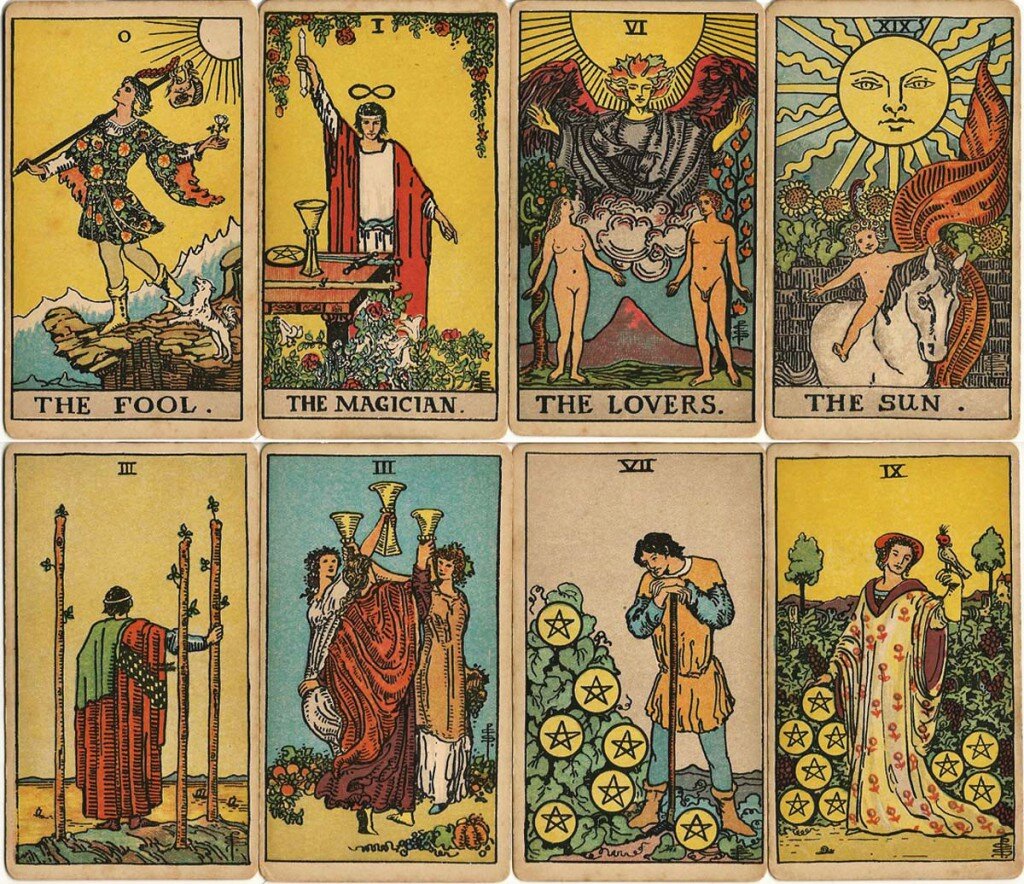Tarot & Oracle
The Tarot is at its tabletop practical basis a deck of decorated cards. Its order and appearance began to be somewhat uniform in the Renaissance, roughly the 15th Century. More complex meanings and purposes of this tool of gamesmanship seem to have begun early in the 18th Century, eventually growing and roaming into the wide spectrum of entertainment, interrogation, divination, and cartomancy that we know today.
A friend introduced me to the I Ching in college, and I quickly understood it to be an effective and enjoyable method of psychological investigation. After years of being put off by some of the more arcane and ambitious claims of tarot enthusiasts, I finally saw the analogy to the I Ching. After many years of resisting carrying the tarot in the store, I now stock it in the simple and inquiring spirit of my understanding. I am attracted to eye-catching art, of course, and I like the idea of cats being involved, of course, although I suspect cats may be more interested in pushing the cards off the table than in being supportive familiars. I respect the tarot’s history, and I will seek out books that place in the context of its origin and survival.
I am aware that the supply and diversity of decks is enormous, but I begin simply and humbly, alert to what my customers like.
Tarot Grand Luxe Tarot Deck
Tarot Grand Luxe Tarot Deck
Popular digital artist Ciro Marchetti has crafted the evocative Tarot Grand Luxe out of his own creative imaginings. Based primarily on the Rider-Waite-Smith™ tarot system, the lavish details in Tarot Grand Luxe also incorporate references to the Tarot de Marseilles, as well as other historic symbols and archetypes. In the 56-page illustrated booklet, Ciro briefly describes the ideas and personal perspectives that inspired each card.






